jupiter2007
SENIOR MEMBER

- Joined
- Feb 19, 2007
- Messages
- 5,294
- Reaction score
- -3
- Country
- Location
APRIL, 2018
I was doing the farmer’s market in Lahore up until last year.

Since now the business has improved 1000 fold, I and my team are too busy to meet the demand. We are working around the clock and it’s increasing day by day, leaving no time for having stalls in farmer’s markets.
To me, farmer’s markets (FM) are wonderful platforms, especially for selling and introducing cheese. Here you are face to face with end users and you get realistic feedback right away due to offering free tastes. Since its a limited market, you get the right audience and their feedback helps you improve if you are a passionate cheese maker.
I not only used to sell small portions, but we were making goody bags including various cheeses in small portions so that people could taste many of them at home and decide which ones suited their taste pallets.
MAY, 2018
I was busy, busy and very busy in upgrading our facility which is now a proper bulk manufacturing unit. We have chillers and cold storage, a completely computerized system, an office (however we are shifting the office into a business area soon), an accounting office, a general manager, a supervisor and everything which a small industry requires. So, from the kitchen to an industry is a journey accomplished.

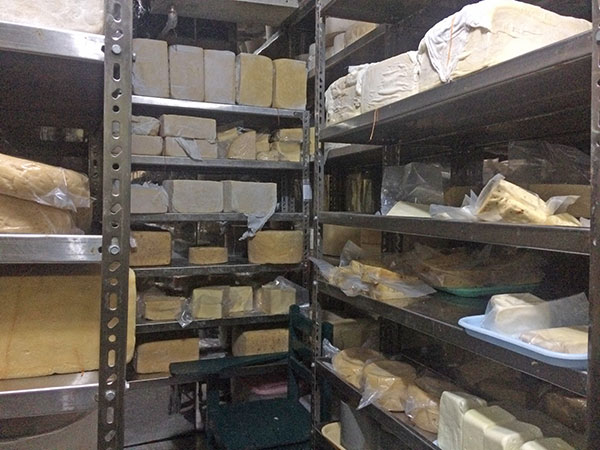
Finally, we are successful in negotiations with a famous chain of food marts and soon our cheese will be selling at 9 different locations – pre-packed as well as live cutting and selling. It was a big mission to accomplish this and finally we are on the way to spread our skills in the country.
..
AUGUST, 2018
Today my company is selling cheese at many super stores with live stations where we offer it for customers to taste and purchase. A large variety of artisan cheeses are sold over the counter. This is turning into a trend and many other stores are contacting us for such displays. Eventually, we will take it to all the major cities, turning FCM into a brand.

All this is not so easy. Despite large man power including cheese makers, packing guys, managers and general manager, we still have to work 10-12 hrs daily. But, my team which was trained by me are dedicated and hard workers and we come out ahead of problems.
There are other artisan cheese makers too, in Pakistan now, including a few trained by me. I feel happy to have given Pakistan other artisan cheese makers.
Today we are turning into a brand and I enjoy cheese making more then ever. We are not only spreading fast but I believe soon we shall be exporting our products to other countries. In another few years, I plan to make a model dairy farm with the cheese facility on the site, producing cheese at international standards.
Goals are big, targets are high, the journey is tough, but hopes are high, too. I feel wonderful when people I don’t even know, meet me and show their love and respect. I feel so humbled.
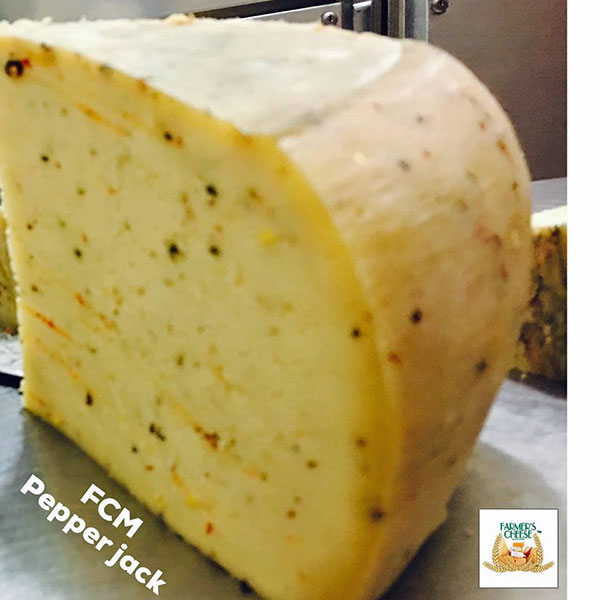
.
We asked for more information about the display cases:
At all the stores we have a live station to taste and to purchase.
There we keep all types of fresh and mature cheeses, from small sizes – 7 ounces (200 g) to 1 1/2 pound (2/3 kg) blocks.
I give the display chillers to the stores. The stores provide vertical coolers where the cheese is stored.
Tastings are from 9am to 12pm and there are 2 employees for 2 shifts. The people behind the counter are hired by my own company.

.
Our supervisor visits all the stores in our delivery van almost every day. He carries stock in styrofoam boxes and he replaces and collects the products that are close to expiring. Usually fresh cheeses tend to expire in a week , but luckily we have very few cheeses come back to the factory. For inventory, we use both software and paper work.
We are in contract with these stores to be the only artisan cheese company in their chains.
In the beginning, it was difficult since everything was new to us, but we managed to build a system which is running smoothly now. We have display stations at 3 stores and now we are ready to add 2 more. The plan is to start with at least 20 stores in Lahore and another 30 in different cities in Pakistan.
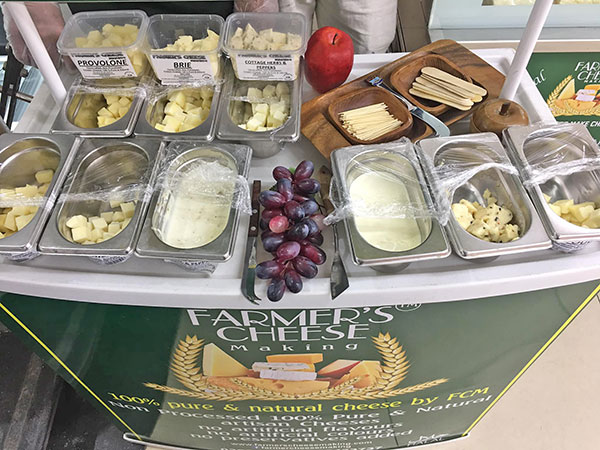
..
Now, also, we are starting contracts with restaurants which purchase bulk from us. Having a cold store has helped me to maintain a big stock of almost 2 tons only for mature cheeses. This is now helping me to open new counters at more stations without much pressure.
Fresh cheeses are produced on a daily basis.

To reach this far, one needs to walk extra miles, but I never underestimate competition, though I believe everyone gets rewarded proportional to the efforts made. I wish my competitors good luck since they are also adding value to the art of artisan cheese making in Pakistan and now people have choice and availability of a large variety of non-processed cheese which was not known few years back .
NOVEMBER, 2018
Life is very busy and time flies. It has been around 8 continuous years of making cheese on a daily basis. “Farmers Cheese Making “ is now a brand in at least 2 major cities. We are selling cheese at counters and in shelves in many (10) branded stores with a number of sales girls and sales boys who are specially trained for this purpose. I have a target of 40 such locations in Lahore as well as Karachi and Islamabad. I hope to get it done within 2019.

Our field staff is trained for offering tasting sessions and promotions. Non-processed, artisan cheeses are making their way to the general public and we are now considered a trusted company. We have developed an IT office to handle day to day operations and everything is now computerized.
Being on shelves in the retail business is a tough job. We did face some serious issues at the early stages but now we are trained to handle multiple food tastings at various locations and even in different cities. I am grateful to the dedicated team and friends who made this happen. I truly love them. We often work 10 to 12 hrs and sometimes without taking a day off. But, we all enjoy the success which comes after collective efforts and struggle.
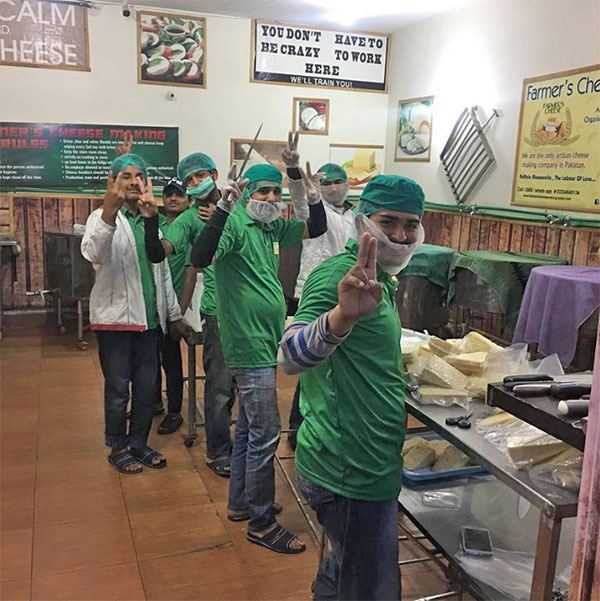
I wish you were here and could see us busy like bees. We have trained ourselves to work in pressure situations. I saw this dream, and it started becoming a truth within a decade. More equipment is being fixed to increase production, and the factory is being extended to another floor. I still read the Moos-letter and enjoy to see how cheese is being loved everywhere. When it comes to cheese, the world is a global village.
BTW, the Keto diet (short for ketogenic) is quite “in” here these days. It is a low sugar, low carb diet with lots of fats. This helps to reduce weight significantly and quickly. No sugar, no flour, no ice creams or cold drinks, no milk, no fruits, nothing which helps produce insulin in your body. After some time, the body shifts it’s energy source from insulin to fats. This diet discourages processed food and non-processed cheese is encouraged. Since we produce non-processed cheese, its 100% liked by people on the Keto diet. All we do is to take small pieces of cottage cheese, bocconcini and paneer, put them in a box and place some green and black olives on top. The Keto box is ready. If we mix in zucchini and tomatoes, the keto salad is ready.
JANUARY, 2019
Today, January 16th is my birthday. To my surprise, I received a parcel at my cheese facility address which was sent from the USA, and it turned out to be a Home Cheese Making book by Ricki Carroll with a forward by Ari Weinzweig (tough to pronounce) right in front of my eyes. Going through, still surprised, I came across my own story. What a coincidence. It made my day! These were unbelievable moments for me. I had almost forgotten the interview given and there was that great book delivered right on my birthday.

Page 94 in our latest edition of Home Cheese Making
You all are such an amazing team, remembering an ordinary person living at the other end of the world. I’m so blessed to have known you in this life.
MARCH, 2019
Some developments to share. The new government of Pakistan is keen in promoting local cheese making and to that end, our ministry of live stock conducted a seminar in which I was invited to represent my company. The government is looking for a road map to help cheese making.
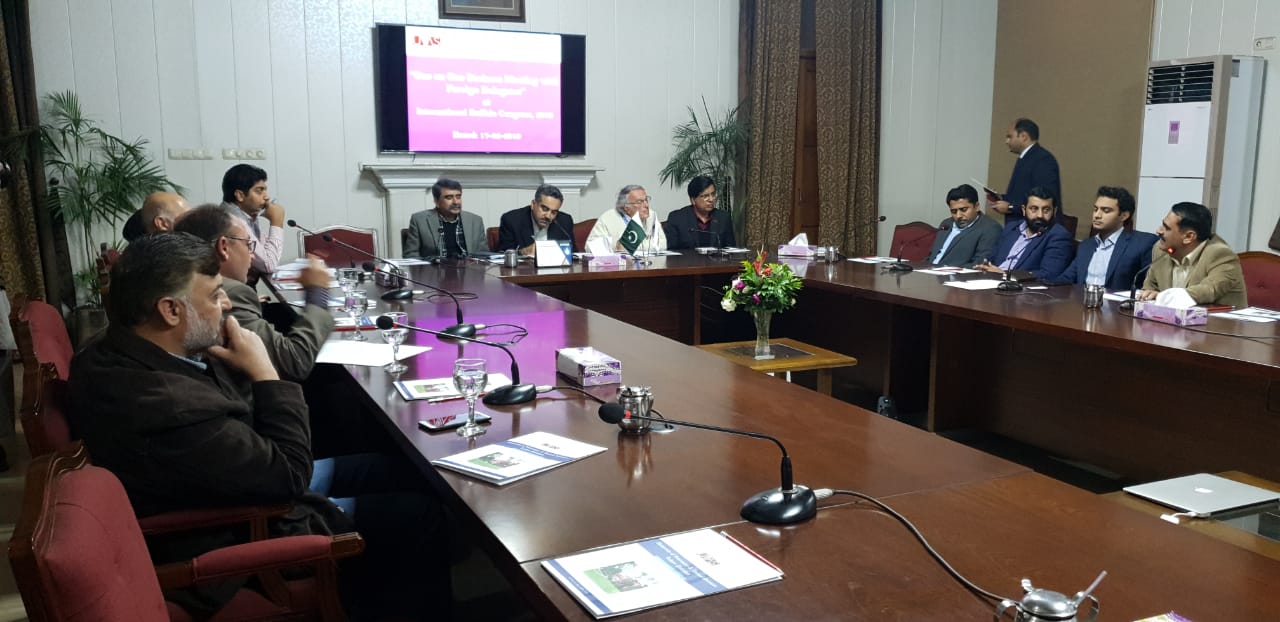
An Italian professor, Dr. Antonio Borgees was invited to head this seminar which was about cheese and buffalo milk production in Pakistan. Later, Dr. Antonio visited my cheese facility and was impressed by the variety of cheeses produced and the SOPs we follow.

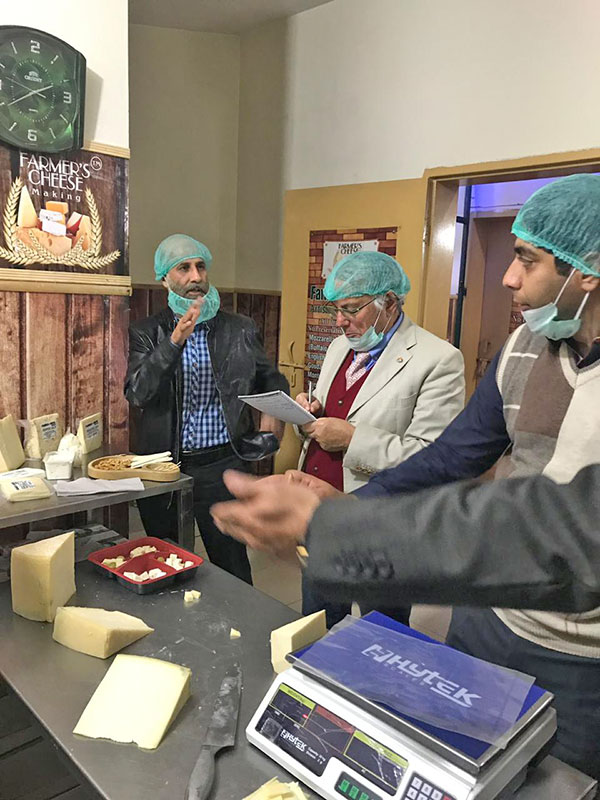
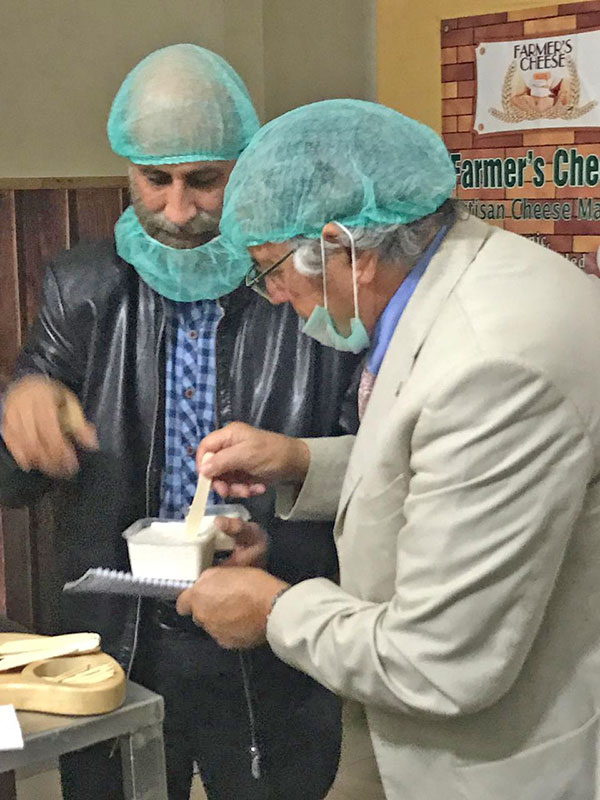
It was a great moment, looking 10 years back when I started cheese making from home and today we are a brand. Some proud moments are enough to feel fresh in life. I am preparing a nice and comfortable office which is at a little distance from the factory. Accounts, IT and HR will be shifted there. Currently, I am working with around 396 – 475 gallons (1500 to 1800 liters) of milk per day which is intended to double in the next 6 months.
Also, I am trying to assist the food authority to maintain standards for artisan cheeses since it’s a new subject with them. I also have an invitation to visit Italy in May and learn from Italian cheese makers. I believe one day Pakistan will be among the top cheese making and exporting countries since we rank 3 in milk production.
Farmers Cheese Making
Website: https://farmerscheesemaking.webs.com/
Facebook: https://www.facebook.com/farmerscheesemaking/
Contact: [email protected]
Hours of Operation – Mon-Sun: 9 – 9pm
Cheese may not have a huge market in Pakistan but Arabs, Turkish and European love cheese. How much cheese are we exporting?
















